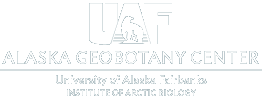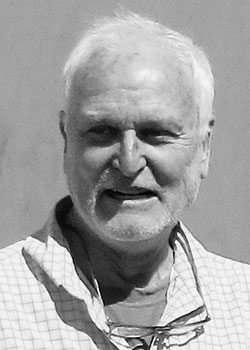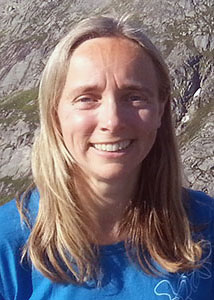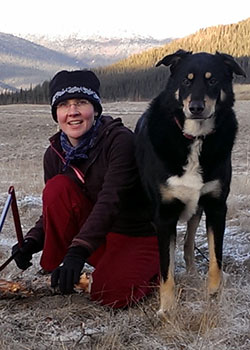
Plant community composition and growth rates are strongly influenced by their interactions with mutualistic and pathogenic microbes. Carbon return from terrestrial systems to the atmosphere occurs via respiration, the bulk of which is due to microbial break down of dead plant material. To understand Arctic contributions to the global climate system, we must understand the ecologies of the plant and microbial communities in the Arctic.
Why species occur where they do is a core concern of the discipline of ecology (Krebs, 1978). Assembly rules, i.e. the processes by which species disperse to and establish within a local community is one key to understanding species distributions and community composition. Due to their radically different
evolutionary and ecological dynamics, we might expect plants, fungi and bacteria to be governed by
different assembly rules. Yet these three kingdoms interact intensively and interdependently in soil and can reciprocally affect community compositions of the other kingdoms. Their combined interactions and activities comprise the nexus of ecosystem function in terrestrial biomes. Discovering the fundamental ecological drivers of Plant-Fungal-Bacterial (PFB) co-assembly is particularly critical in the Arctic due to the rapid pace of climate change and the ongoing shifts in vegetation, and consequences for climate feedbacks.
This NSF project encompasses the widest geographic sampling across the Arctic. We are analyzing the biodiversity of all three kingdoms from 3580 soil cores collected along two bioclimatic transects across the North American and Eurasian Arctic, from the Low to the High Arctic and from from local (sub-meter) to continental (1000s km) scale. Furthermore, the study leverages the most extensive and diverse environmental measurements (metadata) yet to be applied to understanding Arctic fungi and bacteria (See Biocomplexity project, NSF Award No. OPP-0120736; Yamal EAT project, NASA Award No. NNG6GE00A).
Our approach includes Illumina sequencing to deeply characterize diversity of bacterial and fungal communities, massive clone-library Sanger sequencing to provide phylogenetic context for fungi, exhaustive site surveys of plants and lichens, and shotgun plastome sequencing of plants for phylogenetic inference. We pose a series of hypotheses about the drivers of alpha and beta diversity as well as community composition separately and jointly across plants, fungi and bacteria.
Using newly developed methods in community genomics and statistical analysis, we will describe and disentangle the drivers of the biodiversity of plant, fungal and bacterial (PFB) communities in the Arctic.
Funded by NSF Award No. 14-584.
People
Donald Lee Taylor
-
Address
Department of Biology
1 University of New Mexico
MSC03 2020
Albuquerque, NM 87131-0001
-
Phone
505 / 252-3510
-
Email
Email Donald Lee Taylor
Donald A. (Skip) Walker
-
Address
Department of Biology and Wildlife
Institute of Arctic Biology
University of Alaska
902 N Koyukuk Drive
311 Irving I, PO Box 757000
Fairbanks, Alaska 99775-7000
-
Phone
907 / 474-2460
-
Email
Email Skip Walker
-
Website
www.geobotany.uaf.edu
Cristina D. Takacs-Vesbach
Inger Greve Alsos
Ina Timling
-
Address
Department of Biology and Wildlife
Institute of Arctic Biology
University of Alaska
902 N Koyukuk Drive
311 Irving I, PO Box 757000
Fairbanks, Alaska 99775-7000
-
Phone
907 / 474-5606
-
Email
Email Ina Timling




